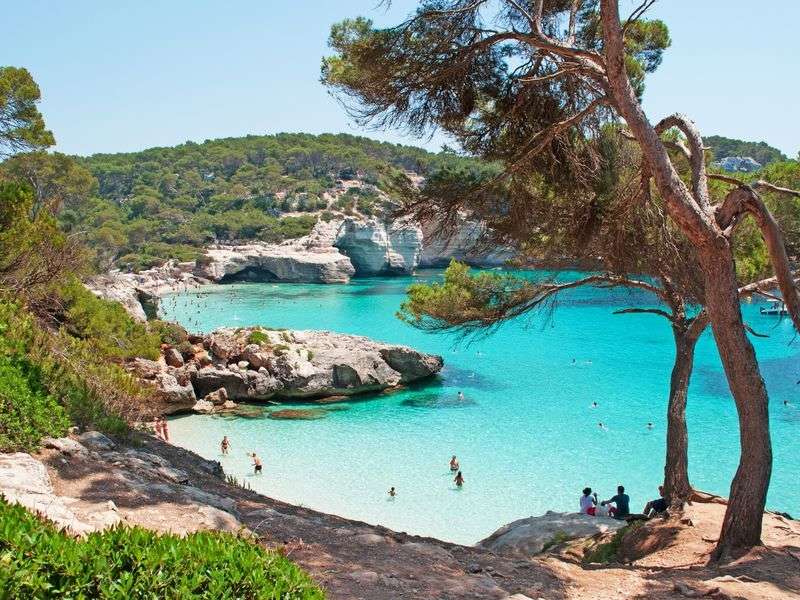Why is the Second-Hand Car Market in Spain So Expensive?
Friday, October 17, 2025
As an expat in Spain, you've probably noticed it: the price tag on used cars seems surprisingly high, often more so than in your home country or other major European markets like Germany. You're not imagining things. The Spanish second-hand car market operates under a unique set of circumstances that drives prices up.
Here is a breakdown of the key factors causing those elevated prices:

1. High Demand Meets Low Supply of Young Cars
The primary reason for high prices is a classic supply and demand imbalance, specifically for desirable, newer used vehicles.
-
Longer Car Ownership Culture: Spaniards traditionally hold onto their cars for a very long time. Unlike in countries with a strong "change every three years" culture, it’s common for cars to be kept until they are 10, 15, or even 20 years old. This means the supply of well-maintained, low-mileage vehicles between 3 and 7 years old is severely restricted, pushing the prices of these few models sky-high.
-
Less Leasing (Renting) Culture: In many European countries, corporate and private leasing is a major source of young, well-serviced used cars. In Spain, this leasing culture is less prevalent, which further limits the consistent, high-quality supply that enters the secondary market.
-
High Cost of New Cars: New cars are expensive in Spain, which pushes a large segment of the population, including young families and budget-conscious buyers, to exclusively target the used car market. This massive demand from local buyers keeps prices competitive and prevents them from dropping.
2. High Transaction Costs and Taxes
The financial transaction of buying a used car comes with significant additional costs that contribute to the final price.
-
Transfer Tax (Impuesto de Transmisiones Patrimoniales): When you buy a used car from a private individual (the most common source), you have to pay a regional transfer tax. This tax is typically 4% to 8% of the car's official value and can be a substantial hidden cost compared to buying a used car in some other countries.
-
Retention of Value: Because of the tight supply, cars in Spain tend to depreciate slower than in other large markets. This higher residual value means sellers (and dealers) can demand a better price for older vehicles.
3. Importing is Not a Cheap Alternative
You might consider importing a cheaper car from another EU country, such as Germany, but this rarely offers the significant savings you might hope for.
-
Bureaucracy and Fees: Importing a car to Spain involves a complex process called matriculación (re-registration). This includes fees for technical inspections (ITV), homologation, administrative processes, and, crucially, a Registration Tax (IEDMT) based on the vehicle's CO2 emissions. These fees can easily add several thousand euros to the final price, wiping out any initial savings.
4. Market Quality and Dealer Pricing
While you pay a high price, the quality of the average Spanish used car is often disappointing, which can be frustrating for expats.
-
Older Fleet: A large percentage of the used vehicles for sale are over 10 years old and have high mileage.
-
Dealer Markups: Used car dealers often purchase older, cheaper vehicles, polish them up, and then apply substantial markups to capture the high demand, making the price-to-quality ratio unfavourable.
In short, the Spanish used car market is a seller's market, characterised by low supply of young vehicles and high structural demand, making it an expensive place to acquire a second-hand car.
 1
Like
Published at 9:05 PM Comments (0)
1
Like
Published at 9:05 PM Comments (0)
Escape the Crowds: Discovering Spain's Untouched Regions
Saturday, October 11, 2025
Spain remains one of the world's most beloved travel destinations, a vibrant tapestry of history, sun-drenched beaches, and world-class cuisine. Yet, the sheer volume of visitors has led to over-tourism in hotspots like Barcelona, Seville, and the Balearic party islands. For travellers seeking authentic charm, natural beauty, and a peaceful escape, the secret lies in turning away from the well-trodden paths toward Spain's magnificent, less-visited regions.
Here are some of the country’s best-kept secrets, offering a true taste of Spanish life far from the tourist throngs.

The Wild Green North: From Coast to Wine Country
While the southern coast basks in relentless sun, Northern Spain offers a dramatically different, lush, and rugged landscape, often feeling more like Ireland or Cornwall than the Mediterranean.
-
La Rioja: Often cited as Spain’s least-visited region, La Rioja is an absolute must for wine lovers. Beyond its over 500 internationally renowned wineries, the region boasts stunning medieval villages, pilgrimage churches, and the quiet beauty of the Sierra de Cebollera Nature Reserve.
-
Asturias: Nestled between Galicia and the Basque Country, Asturias is a haven of green mountains, spectacular coastline, and picturesque fishing villages like Cudillero and Luarca. Its unpredictable weather keeps mass tourism at bay, ensuring tranquillity and a truly authentic northern Spanish experience. Don't miss the dramatic cliffs and quiet beaches that resemble the rugged English coast.
-
Galicia: Known for its Celtic roots, foggy forests, and spiritual heritage, Galicia is home to the stunning Rías Altas—a craggy coastline dotted with quiet seaside towns. A highlight is the Cíes Islands, an archipelago off the coast, often called the "islands of the gods," which feature pristine, Caribbean-like beaches with protected status and limited daily access.
-
Cantabria: Explore the hidden gem of the Costa Trasmiera, a surprisingly rural coastline with superb beaches like Playa de Ris. The quaint mountain village of Carmona offers a look at traditional northern mountain life.
Inland and Southern Tranquillity
Beyond the coastal rush, Spain’s interior offers historic cities and bucolic mountain escapes that have largely flown under the radar.
-
Aragón (The Matarraña): This vast region remains stubbornly off the mainstream tourism map. One of its most beautiful corners is The Matarraña in the province of Teruel. Dubbed the "Spanish Tuscany," this area features rolling hills covered in olive and almond groves, peppered with gorgeous, honey-colored medieval villages like Valderrobres, perfect for slow travel and quiet contemplation.
-
Extremadura (Valle del Ambroz): Located in western Spain, the Valle del Ambroz is a bucolic, sparsely populated area. It’s ideal for nature lovers, offering an abundance of beech and birch forests, terraced hillsides of cherry and plum orchards, and numerous wild swimming spots.
-

-
Cádiz, Andalusia: While Andalusia has major hotspots, the port city of Cádiz offers an escape. As one of Europe's oldest continuously inhabited cities, it rivals the historic charm of Seville but with a more laid-back, coastal vibe. South of Cádiz, the town of Tarifa is a surf-loving haven on the southernmost tip of mainland Europe, offering stunning views of Morocco and access to wild, protected beaches.
Island Getaways Without the Crowds
While Mallorca and Ibiza are globally famous, not all of Spain's islands are overwhelmed.
-
Quieter Balearics: While northern Ibiza is known for its pine woods and secluded coves, the island of Menorca is a UNESCO Biosphere Reserve and offers a significantly quieter alternative, ideal for peaceful breaks and nature-focused activities.

-
Lesser-Known Canaries: Head to the smaller, westernmost Canary Islands to truly avoid the masses. La Gomera and El Hierro are less-visited and offer a sanctuary for reflective tourists. La Gomera is known for its lush, laurel forests in the Garajonay National Park, perfect for hiking, while El Hierro is the smallest island and is a UNESCO Biosphere Reserve, popular for its clear waters and diving opportunities.
By choosing these destinations, you not only enjoy a more serene and culturally rich holiday but also contribute to a more sustainable distribution of tourism across Spain. It's time to discover the true, unspoiled heart of the country.
 4
Like
Published at 11:33 AM Comments (0)
4
Like
Published at 11:33 AM Comments (0)
Spam post or Abuse? Please let us know
|
|